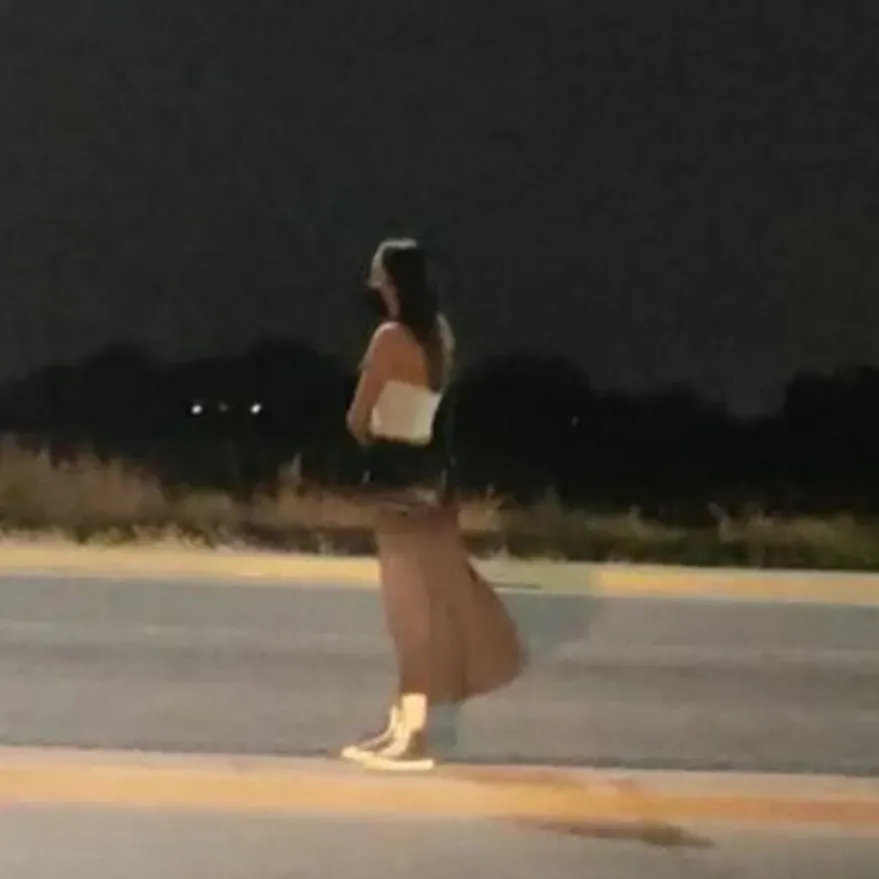The death still not clarified of the teenager Debanhi Escobar exposed the drama of the thousands of disappeared and the risks faced by women in Mexicobut also a questionable judicial and media handling of the case.
Three weeks after the discovery of the body on the outskirts of Monterey (north), All the hypotheses remain open, from a femicide to an accident, while accusations of incapacity rain down against the authorities.
LOOK: Friends of Debanhi Escobar reported that he had been the victim of robbery prior to his disappearance
Between investigative failures and an apparent lack of progress, on Sunday he was found on the outskirts of Monterey the body of another young woman disappeared on March 31: Yolanda Martinez26 years old.
The State Attorney’s Office New Lion suspect that Martinezwho according to his family had left to look for work, committed suicide.
As to Debanhi18, has only confirmed that she died of a blow to the head and was found in the underground water tank of a motel, 12 days after she disappeared after attending a party.
LOOK: Doubts about the case of Debanhi Escobar: Why did he run out of the party? What happened to him at the motel?
Investigators had inspected the site four times before the find. Two officials from the Prosecutor’s Office were dismissed for “errors” and “omissions.”
“We have a lot of evidence that Debanhi was killed and planted (put in the well)”, holds his father mario escobar, who hired an autopsy and denounces threats against him. This Friday he will be received in Monterrey by the Mexican president, Andrés Manuel López Obrador.
“The indolence and little capacity to investigate, the criminalization of the victims and the risk of impunity are repeated,” says Valeria Moscoso, a specialist in psychosocial work.
social identity
According to the Prosecutor’s Office, In Nuevo León, 56 women have been murdered this year, 42 in femicides. In addition, about 300 have been reported missing, of which 90% were located.
The problem spreads all over Mexicowhere in 2021 there were 3,751 murders of women (1,004 classified as femicides), most of them unpunished.
The country also registers a chilling figure: almost 100,000 disappeared, most of them since the fight against drugs was militarized in 2006.
In the midst of this maelstrom of violence, Debanhi’s death sparked unusual interest in Mexico, where the femicide crisis dates back to the 1990s and especially hits poor women, many victims of their partners. It also garnered international attention.
Although not confirmed femicidethe case of the law student “brings the experience closer to more favored social sectors, therefore with more media and political influence, who consider themselves less likely to suffer this violence,” explains sociologist Christian Ascencio.
It also “connects with a randomness that makes many women think that the same thing could happen to them” because, like Debanhigo out with friends or use taxis for safety, adds the professor at the National Autonomous University of Mexico (UNAM).
After an altercation with the driver, Debanhi got out of the taxi on the “road of death”so called because of the presence of organized crime and because in recent years some 77 disappearances were reported there.
The driver, who took the photo of the lonely young woman who made the case viral, denies being behind her death.

Banalization
In the absence of certainty, In social networks and some media theories about the tragedy proliferate, encouraged by videos broadcast or leaked from the Prosecutor’s Office.
These video surveillance recordings show the journey of Debanhi after leaving the party, in the middle of an argument with a man, until walking alone to the motel.
A brief appearance through a restaurant window is his last image alive, while last week his identification was found in a condominium 20 km from the motel.
The videos are repeated endlessly on news and variety shows, in one of which a psychic claimed to have contact with the young woman.
“It is becoming a media spectacle that frivolizes the news”warns Ascencio, who acknowledges, however, that social pressure helps keep the case alive.
The reiteration of images, such as one of Debanhi apparently buying liquor, “revictimizes” her and it is an “ethical reduction” of the press, observes Andrés Vidal, professor of political science at UNAM.
“They have given my daughter many adjectives (…). I hear things like ‘she was the one doing drugs, she bought the vodka‘. Unfortunately, she is not here to defend herself,” lamented Dolores Bazaldúa, the student’s mother.
The leaks, meanwhile, could “affect the weight of the evidence,” Ascensio maintains, noting that the pressure, combined with investigative weaknesses, can lead to “a guilty party being fabricated.”
Congress is studying a law that would impose 10 years in prison on those who spread leaked information about a victim.
Despite this, the governor of New LionSamuel García, summoned the Prosecutor’s Office to reveal Yolanda Martínez’s file, accusing the agency of “hiding evidence.”
But the state prosecutor, Gustavo Guerrero, accused him of “using the victims in the media” and called on him to protect women.
Although the process has not been disclosed, photographs of Martínez’s belongings have been circulating since Wednesday, including a plastic cup with an alleged farewell note.
Source: Elcomercio

:quality(75)/cloudfront-us-east-1.images.arcpublishing.com/elcomercio/YO7JPOVZ3ZBIBGLFWEUNMAWFRU.jpg)

:quality(75)/cloudfront-us-east-1.images.arcpublishing.com/elcomercio/EQPR7DXVNRHPLBTIG5IC3MQYEM.jpg)
:quality(75)/cloudfront-us-east-1.images.arcpublishing.com/elcomercio/7S7GO5FXKJD4DJY233RIFEB7RQ.jpg)
:quality(75)/cloudfront-us-east-1.images.arcpublishing.com/elcomercio/ZVLKUUNKDVGH7DQU4RBHRW2UJY.png)
:quality(75)/cloudfront-us-east-1.images.arcpublishing.com/elcomercio/MTOM4XVOR5FLDDQWBXHR2SLGJ4.jpg)
